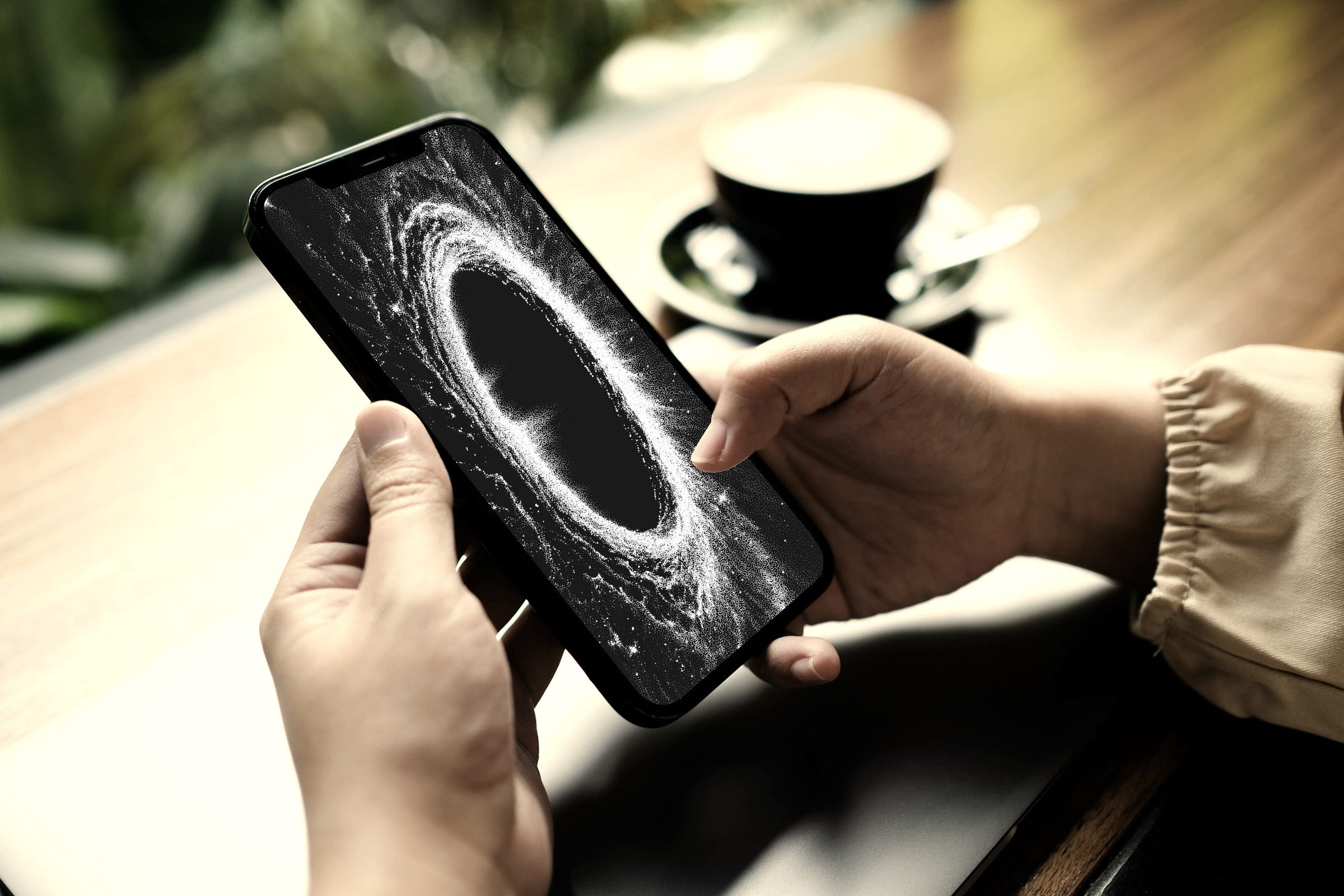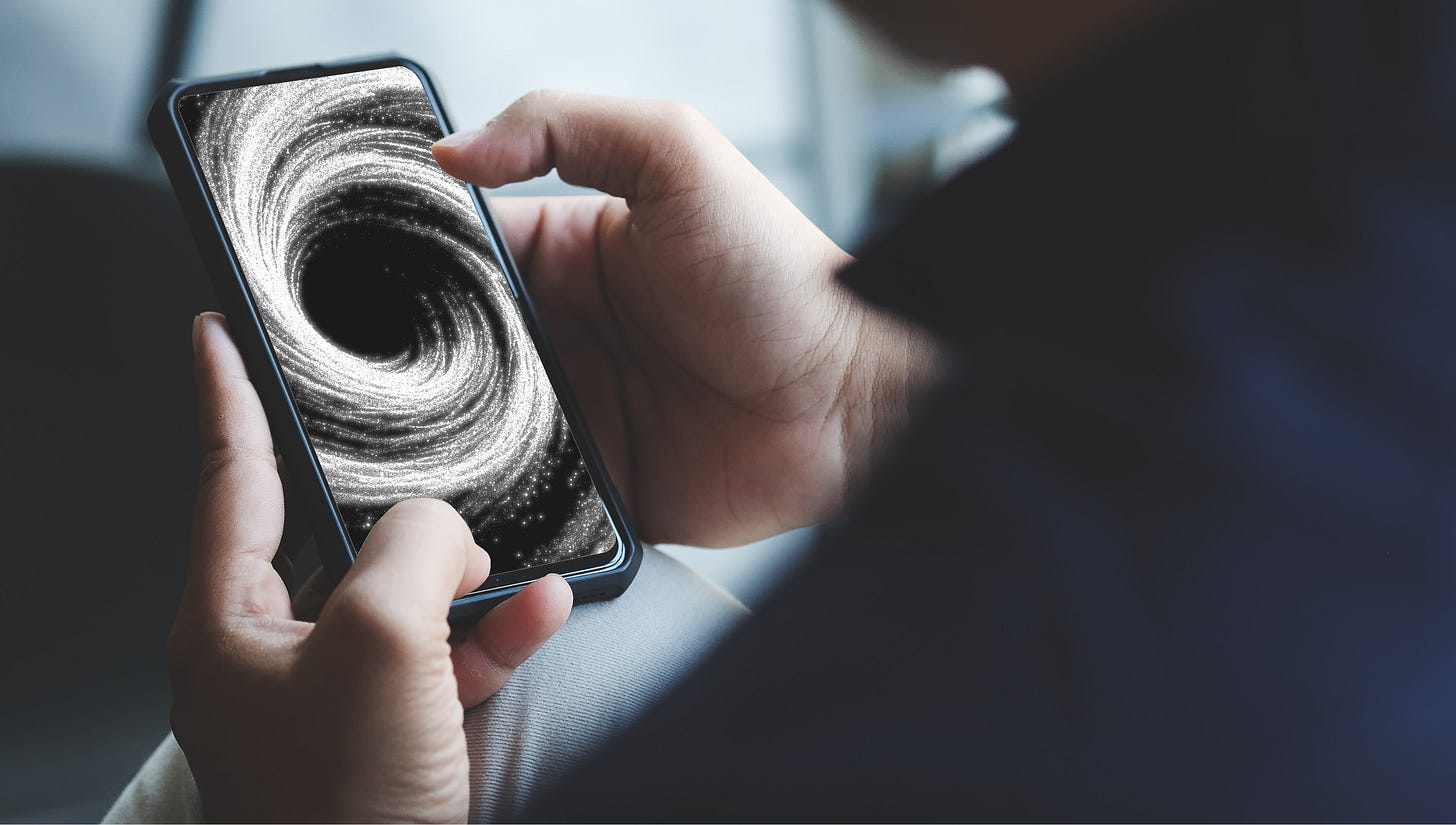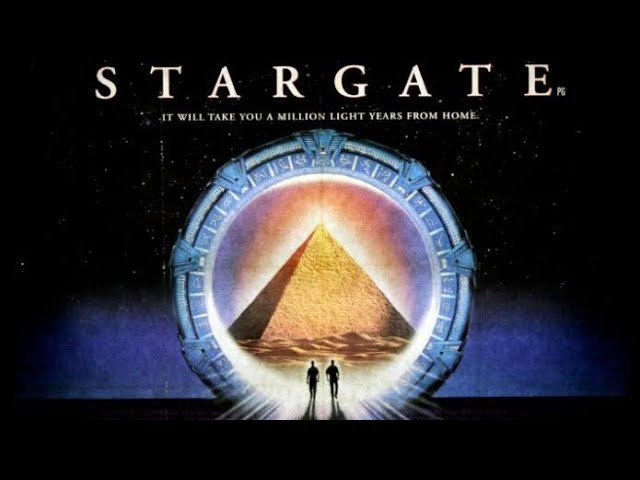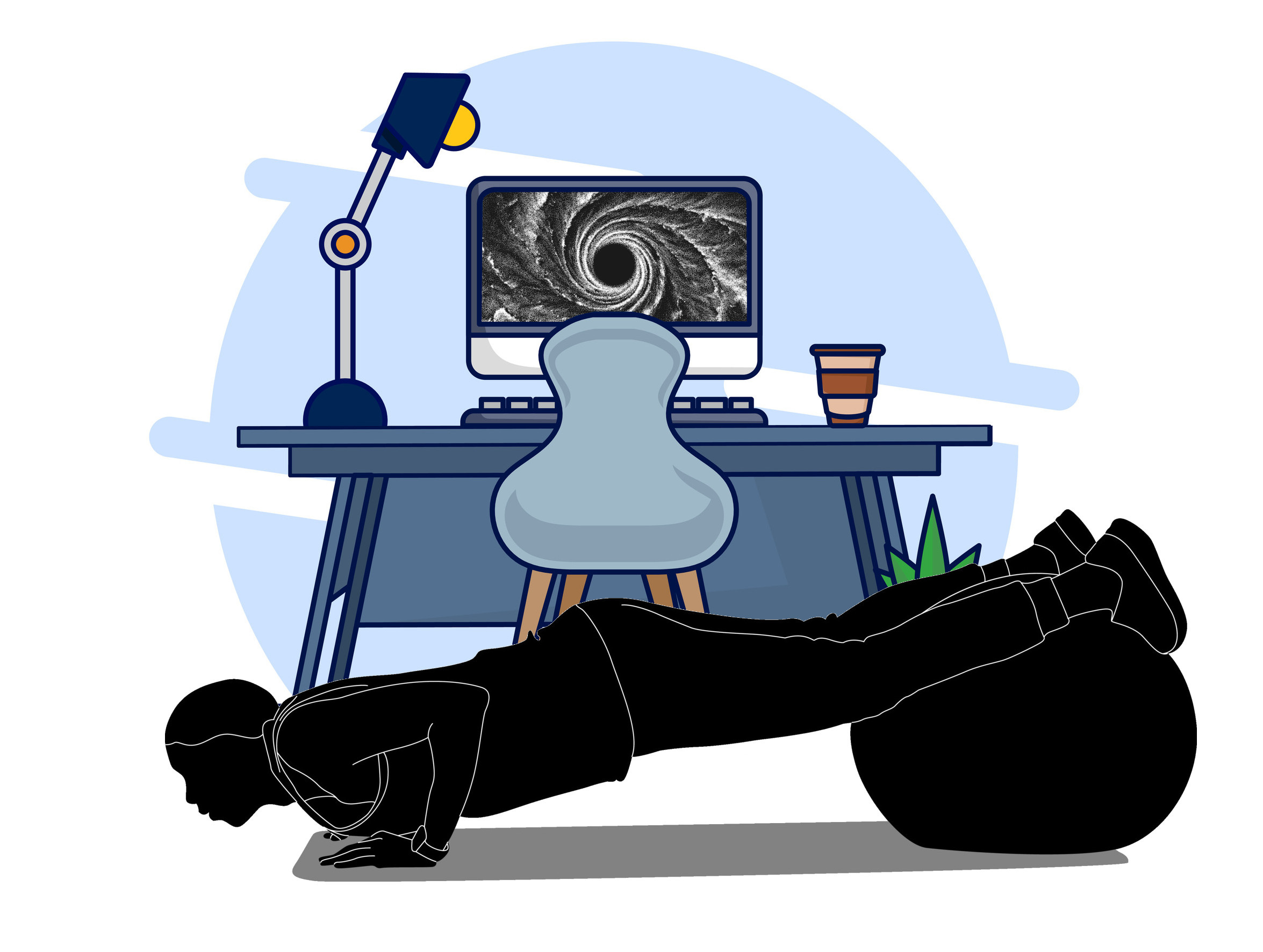Dearest readers. I took a few months off Substack, but now I’m back. I will be reopening paid subscriptions, which have been on pause while I’ve been away. I’m happy to be back.
In 2022 I disappeared from Substack for nine months. Nominally, it was because my book Cloudmoney was released, but the true cause was that I’d had an emotional breakdown. It was initially triggered by a runaway obsessive compulsive disorder (OCD) outbreak, which itself started when I was on the former Twitter. It escalated into a raging inferno of anxiety attacks. In the cold wreckage of burned out depression that followed, I was left unable to work for months.
OCD is a complex thing to describe, and it manifests in different ways in different people. One common thread, however, is that people with OCD tend to be prone to anxiety-inducing thought loops. We design rituals to try to calm those down, hence the disorder being associated in the public imagination with obsessive repeated actions.
For a person with OCD, though, the Internet can be a source of all manner of triggering debris - stuff that can set off attacks - and in the run-up to my breakdown I was heavily immersed in the sewers of social media. My job as a commentator on global finance and tech often required me to wade into the digital world for up to several hours a day, and all sorts of shit would float into my consciousness.
In the heyday of Twitter, for example, I’d be swarmed by Bitcoin maximalists who hated my takes on the industry they loved. After bruising rounds of flame-wars online, I’d have to retreat. As I lay in a candlelit bath, I’d continue to have the arguments going on in my head, as if fighting the ghosts of digital avatars. It sometimes felt like a cyberspace symbiont had crawled into my mind while online, and left its tendrils in there. I’d literally visualise myself pulling those threads of toxicity out of my head.
Let’s face it. A social media site is a network of millions of distant people all tethered to a corporate server, delivered to you via an interface. That interface is like a portal between you and this abstract collective, but each member of that collective is experiencing this portal from their own subjective reality, sitting at their desk, or staring at the screen of their phone on a train.
Social media is a realm of perpetual unfinished business, where the arguments will rage on indefinitely. Each person experiences this seeping into their physical environment, creating a superimposed layer of digital interactions mixing with those in the real world. I, for example, would find myself at the urinal of a Berlin bar, taking a piss while checking replies, or seeing how many likes my latest tweet got. I’m sure you’ve all experienced this too. The fragmentation of consciousness between our immediate reality and the one delivered to you via the portals is now all pervasive.
The fact that portals are dangerous is a classic sci-fi theme. For example, the cult 1994 film Stargate features a portal - discovered in the ruins of ancient Egypt - that serves to create a bridge between earth and a distant planet. In the Netflix hit series Stranger Things, a US government secret program accidentally opens a portal into a nightmare underworld, allowing ghoulish creatures in. The moral is always the same: If you open portals, and are unable to close them, stuff starts to seep through.
Many of us now experience a layer of ambient digital pollution that leaks into all aspects of our life, but the stuff that’s leaking isn’t fully chosen by us. There are overlords who curate the portals - the big tech companies - and they like to keep you addicted by pushing triggering stuff at you, or showing you stuff you’ve previously responded to. They want the ambient digital layer to surround you at all times, because their business models are built upon your reactions to it.
Big tech companies have a strong business incentive to literally fuck with your mind, constantly, and are in a strong position to now do it. Like all good capitalists, they also believe they have no choice but to do this, because if they don’t they will be outcompeted by someone else who will. It’s become like a turf war between digital crack dealers, to get you ever more deeply dependent on those dopamine hits your nervous system has begun to crave.
Once you’re hooked on this stuff, it opens the way for what Cory Doctorow refers to as the ‘enshittification’ of the Internet, the situation where the dealers begin to more blatantly manipulate and squeeze you. More generally, the portals are now conduits for all sorts of new toxicity to slosh through, from fake news bot armies to AI slop.
Physicalizing the digital
Now, I’m not the kind of person who advocates for individual ‘life-hacks’ to solve systemic problems that really need collective political action. Sometimes, though, in the absence of collective resistance, you need these little hacks as a tactical measure.
This is why, over the years, I’ve tried to design many personal systems to deal with the sheer overload of digital life. For example, I had a system that represented the Internet as a physical city I’d ride around. At one point I would use a pile of coins to represent the emails I had to answer. I even briefly had a notebook in which I’d write down when I entered the web. That was way too exhausting, but it shows that my brain was seeking out some kind of physicality. My intuition was that the wraith-like nature of the Internet needed to somehow be mediated through physical forms.
This idea of creating a physical double of cyberspace makes sense, given that we are, above all, tactile beings. Despite all the Silicon Valley ideology that imagines us as pure minds that could exist apart from our bodies, the reality is that manipulating physical objects and moving through physical space as babies is by far our most primal experience, without which your mind would pretty much be useless.
In fact, within anthropology we see many examples of how humans try to grapple with ephemeral phenomena - such as shifting social relations and perceptions of the supernatural - by manipulating physical objects. This sometimes gets filed under the catch-all phrase ‘fetishism’. For example, a peace treaty is a shaky relationship between a whole range of potentially flaky people, but you can give it more ‘solidity’ by representing it as, for example, an elaborately constructed belt made out of whelk shells. This is what’s called Wampum among native Americans. The wampum belt pictured below was given to William Penn by the Lenape people in 1682, to mark a treaty.
In Papua New Guinea, similar shell trinkets called Tabu get passed over during marriage ceremonies. This is sometimes called ‘shell money’, and it requires a lot of labour to produce. This symbolically gives weight to the newly forged social relationship between two people coming from two clans.
Physical objects - especially those that require definite energy to produce - can be used as a means to give a more concrete feeling to otherwise ephemeral stuff, or to put a lid on the more chaotic elements of social life. Consider, for example, an engagement ring. It’s a piece of forged metal that supposedly ‘contains’ a relationship between two people. Somehow, the presence of the ring makes this relationship seem more real than if it were not present. To take the ring off, and cast it into the ocean, is to symbolically break that relationship, something that will then be mirrored in the real world between the two people (who are, after all, not pieces of forged metal).
Could we draw upon these ancient traditions of ritualistic fetishism to mediate our engagement with the digital world? Could it be used as a way to improve the nature of the relationship? Well yes. Let me introduce you to my latest, and most effective, system yet. I call it the Portals Protocol.
The Portals Protocol
There are three steps to setting up your own portals protocol. Firstly, you map the networks you are part of. Secondly, you map the portals that connect into them. Thirdly, you develop physical rituals, with fetishistic objects, to open the portals and enter them, and to later close them. These rituals can be calibrated to do something useful that would otherwise be negated by digital life. In my case, I use them for physical exercise. Let me explain the three steps.
Step 1: Understand your networks
Human society is interdependent, but that operates at multiple scales. For example, we begin life surrounded by the protective network of the family, set within the contours of our community, and as kids we build networks of friends. As we get older we begin to integrate into the larger, more diffuse network of the nation, and the global economy.
All of these are different networks that we can plug into, and we all have to juggle them. Some people keep the balance towards the local or the close - connecting most readily with family and friends - while others are heavily weighted to the distant and cold, with hours of their day taken up in interactions with strangers.
Step 2: Mapping the portals into them
Each of these networks can enter your life through portals. These include your WhatsApp messages, which might project your mother into your midst while you’re at the gym, or your email system that portals a scammer into your office, or your Spotify algorithm that projects the labour of a Jamaican musician into your ears as you jog. Youtube connects you to ‘content creators’ and Reddit ports you into specialist debates in subreddits. SMS, Telegram, landlines, and the postal system are all forms of portals.
Social media originally operated as a portal connecting you into vast networks of distant strangers, whose only real claim on you might be that they share some common nationality, or are part of the same global economic system. X is a realm of generic chaos, while Substack tends to port you into a more specialist, slightly more sophisticated network. For me, social media type portals are the most tricky to handle, so I focus my protocol on them.
Step 3: Build rituals for opening and closing portals, and tie them to fetishistic objects
The old landline telephone would have a physical ritual for opening the portal. You’d key in the number, connect to the distant person, have your conversation, and then break it off by putting the phone down. You were left with the feeling that there was a beginning and an end, and that the line was now broken. The portal was closed.
What we tend to have nowadays, though, is the digital equivalent of a countless open telephone lines. So, you need to develop a new physical ritual to both ‘type in the number’, and to ‘hang up’.
Here’s what I do. When I want to enter Substack, X, Bluesky, LinkedIn, or Facebook, I get onto the floor and I do fifteen reps of some exercise, such as pushups. I imagine this physical action as generating energy that enables me to open a small box next to my computer. Inside that box is an old bracelet. I slip it on, and as I fasten it, the portal is opened.
You could do something similar with a ring, or necklace. The point is that the physical object represents your engagement to those you are exposing yourself to via the portal. While you’re wearing it, you are free to jam with them, fight with them, or do whatever it is you want to do.
Once done, I take off the bracelet, put it back in the box and close the lid. That’s not the end, though. I have to then get back on the floor and do another fifteen pushups. That generates energy to close the portal properly. I’ve hung up.
Hedging toxicity
That’s my version of the ritual, but you could of course adapt it to your needs. The primary idea is to create an association in your brain between some solid physical act and the ever-changing fragmentary world of social media.
Ideally, you want the former to be something fundamentally life sustaining, like keeping fit, or practing scales on a piano, or doing a stretching exercise. Basically, choose anything that involves a short-term struggle that culminates in long-term gains.
You then use that to enter the world of short-term dopamine hits that culminate in long-term depression. Essentially, you create an association between something long-term positive, and something fundamentally life draining, like feeding the monster of Big Tech.
By fusing these together, you are - to use financial sector jargon - creating a hedge, or an offset. I’m free to indulge in my social media addiction, but only if I’m prepared to do loads of exercise. If I wish to enter those portals many times a day, I have to do a couple hundred reps.
This creates a much more deliberate way of interacting with the portals. Now, when I’m taking a piss in the Berlin bar, I feel little desire to look at my X notifications, simply because I have a bodily association that the portal is closed, and that it needs to be physically reopened before I can go on again. Unless I’m prepared to get on the floor and push out fifteen more, I ain’t going to be checking social media at the pub.
This feeling of doing something positive to mediate access to something potentially negative can help you to make the latter less toxic. It means that when you actually go onto social media, you’ll be more mindful about what you’re doing.
Indeed, when a line is left open, the sense of constant connection eventually gives way into a feeling of disconnection. Humanity is increasingly just disorientated and isolated by the sea of open portals that surround us, and people are feeling more lonely than ever. Ironically, having definitive ways of closing the portals gives you the ability to feel more connected to others. To feel connection you have to ration it.
Finally, I do know that addiction is a slippery customer, and that it will try to coopt my ritual. I have already found myself at certain moments trying to find ways to get around this new barrier I’ve created, maybe allowing myself little exceptions, which in turn can slowly erode the ritual. That’s something I’m mindful about, and it takes me back to my earlier point about life hacks: in the end, we really need some lasting systemic solution that holds the toxicity of the portals at bay. Until that happens, though, I’d love to hear your adaptations of the protocol. Use yours to open a line to me, and others, in the comments section. Send your ideas. Then close it again.











Interestingly I have always accessed social media on a desktop computer, and I always have to type my password to do so (I don't save it in the browser). I then always make a conscious step to logout when I'm finished. It seems that this is the equivalent of my physical ritual: it's a faff to go the relevant site and then enter a password. I find myself checking social media only every few days.
Hi Brett, it was very courageous of you to share your very raw story...and so many writers are addressing the dopamine issue, including addiction in children. One of my favorite writers is Laura Matsue Guenther: At Keepers of the Inner Flame "What Screen Addiction Is Costing Us" (and how to reverse course) What we lose when we fill every pause with screens. Shannon Rowan has a new book: The Red Shoes: Escaping Our Digital Spell | Keith Cutter & Shannon Rowan - interview on youtube